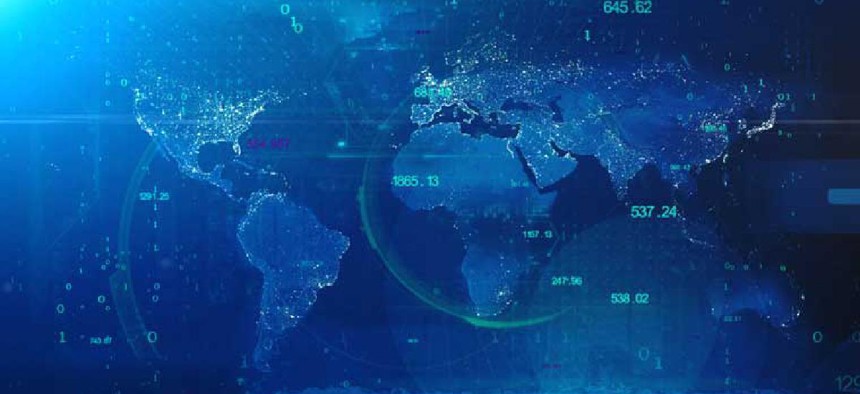4 ways government can use AI to track coronavirus


Connecting state and local government leaders
Artificial intelligence and machine learning can analyze large amounts of data and offer insights leading to deeper knowledge about diseases and enabling health officials to make better decisions throughout the entire evolution of an outbreak.
As of March 10, 2020, 467 confirmed cases of COVID-19 have been reported to the Centers for Disease Control and Prevention in the United States. While governments across the globe are working in collaboration with local authorities and health-care providers to track, respond to and prevent the spread of disease caused by the coronavirus, health experts are turning to advanced analytics and artificial intelligence to augment current efforts to prevent further infection.
Data and analytics have proved to be useful in combating the spread of disease, and the federal government has access to ample data on the U.S. population’s health and travel as well as the migration of both domestic and wild animals -- all of which can be useful in tracking and predicting disease trajectory. Machine learning's ability to consider large amounts of data and offer insights can lead to deeper knowledge about diseases and enable U.S. health and government officials to make better decisions throughout the entire evolution of an outbreak.
Government health agencies can leverage AI technology in four ways to limit the spread of COVID-19 and other diseases:
1. Prediction
As the global human population grows and continues to interact with animals, other opportunities for viruses that originate in animals (like COVID-19) could make the jump from to humans and spread. The U.S. has seen this in recent years, from the recent SARS and MERS viruses, to new forms of the flu and even in the 2018 Ebola crisis in West Africa, where it was discovered that the Ebola outbreak resulted from a toddler interacting with bats in a tree stump.
The CDC estimates that three out of four new diseases in humans come from animals, and scientists believe there are approximately 800,000 unknown animal viruses that could infect humans. Now researchers are turning to AI to help predict hotspots where new diseases could emerge. The technology can integrate data about known viruses, animal populations, human demographics and cultural/social practices around the world to predict outbreaks. Government and public-health officials can use this data to be proactive and take steps to prevent these kinds of outbreaks -- or at minimum, do a better job preparing for them.
2. Detection
When previously unknown viruses make the jump to humans, time becomes a precious resource. The quicker a disease outbreak is detected, the sooner action can be taken to stop the spread and effectively treat the infected population. AI can help here as well.
During my tenure as director of the National Biosurveillance Integration Center in the Department of Homeland Security, we developed pilot approaches using ML to mine social media data for indications of unusual flu symptoms. We also examined near-real-time emergency medical services and ambulance data, using ML to look for anomalies in the medical notes as patients were admitted to hospitals. In these instances, AI provided not only better detection of an abnormal disease event, but was able to do it faster -- weeks before traditional disease reporting would indicate a spike in disease.
3. Response
After a disease event is identified, making informed decisions in a timely manner is critical to limiting the impact. AI can integrate travel, population and disease data to predict where and how quickly disease might spread. At DHS, as we watched for outbreaks of new forms of flu, we leveraged travel, flight and population data around the world and in the U.S. We also used data from the Australasian Flyway -- a bird migration route from China to Alaska -- to best predict where disease could spread and how we could intervene early on. After the Ebola outbreak, scientists at the Department of Agriculture created a travel-census model that was able to predict the exact county in Texas -- and even the likely hospital -- where an Ebola case was likely to be found. The model was spot on.
In addition to using AI to predict disease spread, it can improve the application of current treatment and accelerate the time it takes to develop new treatments. Radiologists are also using AI deep learning -- machine learning systems that learn from experience with large data sets -- to make better treatment decisions based on medical imaging.
For example, data from chest X-rays of coronavirus patients can serve as input for AI models so physicians can make faster diagnoses. Regarding new treatments, creating vaccines for newly discovered viruses is a difficult and time-consuming process that is laden with trial and error. AI can help in this process by examining data from similar viral diseases and then using that data to predict which types of vaccines and medicines are most likely to be effective.
Last year, the first fully AI-developed vaccine was created in Australia. AI-driven drug discovery will transform the medical industry and drastically reduce the amount of time and money required to develop these life-saving medications.
4. Recovery
Once an outbreak is contained or has ended, governments and global health organizations must make decisions about how to prevent or limit outbreaks in the future. ML can be used here too by simulating different outcomes to test and validate policies, public health initiatives and response plans.
In short, AI permits policy-makers and health leaders to conduct a host of “what if” analyses that will enable them to make data-driven decisions that have an increased likelihood of being effective.




